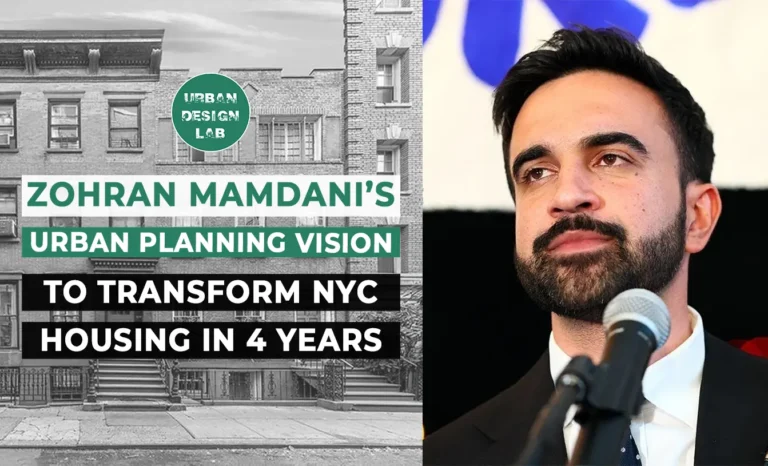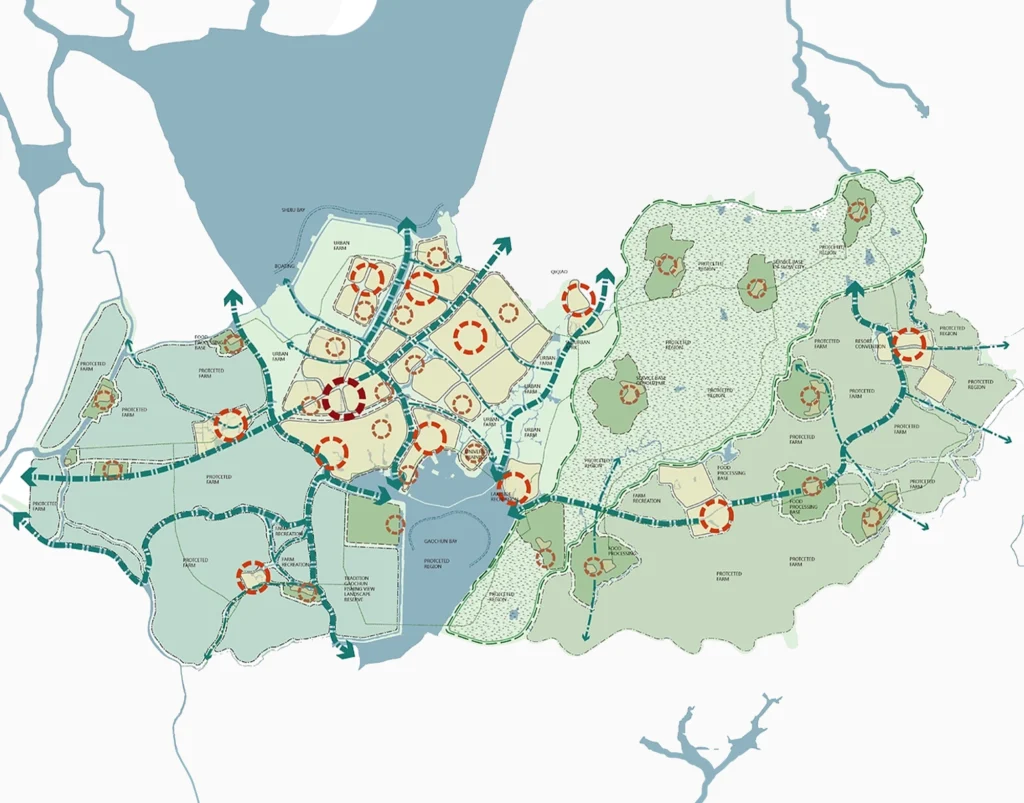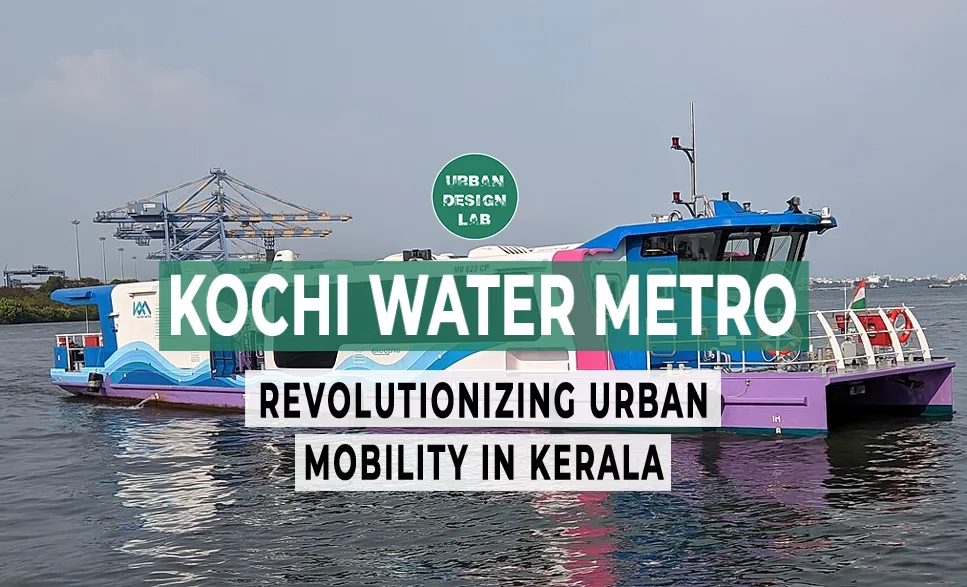
History of Urban Planning in India

From the Ancient Sabhas to British Municipal Experiments
The history of urban planning in India stretches far beyond colonial times, rooted in the ancient traditions of sabhas and samitis — local assemblies that managed land, water, justice, and community welfare. These early forms of governance reflected a deeply decentralized ethos, where civic order was sustained through participation and consensus. Over time, however, centralizing empires, particularly under the Mughals and later princely states, gradually eroded this autonomy. When the British assumed control, they approached urban governance as a tool of administration and revenue collection rather than democratic representation.
The establishment of the Madras Municipal Corporation in 1688, followed by Bombay and Calcutta in 1726, marked India’s first formal municipal institutions — designed to maintain order, sanitation, and taxation efficiency under colonial rule. Yet, as cities expanded and Indian aspirations for representation grew louder, reforms followed. Lord Mayo’s Resolution of 1870 introduced fiscal decentralization, while Lord Ripon’s landmark 1882 Resolution, often called the “Magna Carta of Local Self-Government,” set the stage for representative urban institutions. Despite incremental changes through the early 20th century — including the Royal Commission on Decentralisation (1907) and the Government of India Acts of 1919 and 1935 — real autonomy remained elusive. By Independence, India had inherited a municipal structure built for control, not empowerment — a colonial legacy the nation would later seek to dismantle through democratic reform.

Post-Independence Legacy: Marginalization of Urban Local Bodies
After Independence, India’s governance framework leaned heavily toward the rural, leaving its towns and cities without a comparable constitutional footing. While the framers of the Constitution envisioned panchayati raj as the cornerstone of village democracy, urban local bodies were treated as extensions of the state — statutory entities that could be altered or dissolved at will by state legislatures. This imbalance meant that, for decades, municipalities remained politically fragile and administratively subordinate, functioning more as service delivery arms than as self-governing institutions.
Each state crafted its own municipal laws, leading to a patchwork of systems — some moderately empowered, others entirely toothless. By the late 1970s and early 1980s, as India’s cities expanded and infrastructure buckled under rapid migration and industrialization, the limitations of this arrangement became stark. Urban centers faced mounting crises of housing, sanitation, water supply, and planning, while accountability remained diffused. The growing urban electorate began demanding legitimacy and representation within city governments. Against this backdrop, the 65th Constitutional Amendment Bill of 1989 sought to bring municipalities under the Constitution’s ambit, institutionalizing urban self-governance.
Though it failed to pass, it marked a decisive turning point — the first formal recognition that India’s democratic promise could not be fulfilled without constitutionalizing its cities, paving the way for the transformative 74th Amendment of 1992.
The 74th Constitutional Amendment: A New Dawn (1992–93)

The passage of the 74th Constitutional Amendment Act, 1992, which came into force on June 1, 1993, marked a turning point in India’s democratic evolution. For the first time, urban local bodies (ULBs) were constitutionally recognized as the third tier of governance, moving beyond their earlier status as mere administrative instruments of the state. This amendment signaled a decisive shift toward decentralized urban democracy, where local governments were empowered not just to implement policies, but to formulate and govern their own developmental priorities.
1. Constitutional Status for Urban Local Bodies
The Amendment introduced Part IX-A (Articles 243P to 243ZG) into the Indian Constitution, giving municipalities constitutional legitimacy. This elevated urban local governance to the same constitutional footing as the Union and State governments, ensuring continuity, stability, and protection from arbitrary dissolution. It made municipalities permanent institutions of self-governance — a legal and political recognition that India’s democracy had to extend beyond the ballot box into everyday urban life.
2. Empowerment through Devolution of Powers
Under Article 243W, states were directed to devolve powers, responsibilities, and financial resources to municipalities. This provision sought to make local governments genuine agents of self-governance — capable of preparing and implementing plans for economic development, social justice, and urban management. The intent was to make decision-making more participatory, transparent, and locally accountable, reducing dependence on state bureaucracy.
3. Functional Mandate: The Twelfth Schedule
The Amendment also introduced the Twelfth Schedule, listing 18 key functions for municipalities. These include urban planning, land-use regulation, roads and bridges, water supply, public health, solid waste management, slum improvement, and urban poverty alleviation, among others. This broad functional spectrum aimed to transform municipalities into multi-sectoral institutions capable of addressing both physical and social dimensions of urban life.
4. Typology of Municipalities
To accommodate India’s diverse urban landscape, Article 243Q defined three distinct types of municipalities:
- Nagar Panchayat – for transitional areas moving from rural to urban status.
- Municipal Council – for smaller urban centers.
- Municipal Corporation – for larger cities and metropolitan areas.
This classification ensured that governance structures were tailored to scale, recognizing that the needs of a growing town differ greatly from those of a sprawling metropolis.
5. Democratic Representation and Participation
Article 243R mandated the direct election of representatives from territorial wards, giving citizens a clear and immediate voice in local decision-making. Provisions also allowed for the nomination of experts, MPs, and MLAs, fostering a mix of local representation and professional input. This institutional design embedded participatory democracy into the fabric of urban governance.
6. Wards Committees and Micro-Governance
For cities with populations exceeding three lakh, Article 243S required the formation of Wards Committees — sub-municipal bodies responsible for planning and implementing projects at the neighborhood level. This decentralization within municipalities was envisioned as a mechanism for citizen proximity, allowing local issues to be addressed swiftly and inclusively.
7. Inclusivity through Reservation of Seats
To promote social equity, Article 243T ensured reservations for Scheduled Castes, Scheduled Tribes, and women. At least one-third of all municipal seats were reserved for women, embedding gender inclusivity into urban governance. This measure fundamentally reshaped the representational landscape, making Indian cities laboratories of democratic diversity.
8. Fixed Tenure and Institutional Stability
Under Article 243U, municipalities were granted a fixed five-year term, protecting them from premature dissolution. If dissolved earlier, elections were mandated within six months, ensuring continuity of governance. This provision institutionalized political stability and curbed the discretionary power of state governments to suspend or replace municipal councils at will.
9. State-Level Oversight and Financial Accountability
The Amendment established two vital state-level mechanisms:
- State Election Commissions (Article 243ZA) – to conduct municipal elections independently, ensuring fairness and regularity.
- State Finance Commissions (Article 243Y) – to review financial positions of municipalities and recommend equitable distribution of revenues between states and local bodies.
These institutions aimed to create a systemic balance between autonomy and accountability, reinforcing the financial and democratic integrity of local governance.
Institutional Design: Strengths and Innovations
The 74th Constitutional Amendment brought an unprecedented sense of order and uniformity to India’s fragmented urban governance landscape. For the first time, municipalities across the country began operating under a shared constitutional framework, guaranteeing regular elections, fixed tenure, and inclusive representation. This uniformity replaced the earlier chaos of state-specific laws where municipal bodies could be dissolved at whim. The creation of Wards Committees further localized democracy, allowing citizens to engage directly in budgeting, monitoring, and neighbourhood planning — a quiet revolution in participatory governance, even if unevenly realized. The establishment of State Election Commissions and State Finance Commissions introduced institutional accountability, shielding local elections from overt political manipulation and ensuring a periodic review of financial transfers. Equally visionary was the push for integrated regional planning through District and Metropolitan Planning Committees, designed to bridge the rural-urban divide and encourage coordinated city-region development. In short, the Amendment provided a strong democratic architecture — embedding representation, continuity, and fiscal oversight at the city level — and laid the foundation for what could have become a golden era of decentralized urban governance.
GIS Made Easy – Learn to Map, Analyse, and Transform Urban Futures
Institutional Design: Shortfalls and Structural Weaknesses
Yet, the reality on the ground remains far from the constitutional ideal. The 74th Amendment’s promise of empowerment has often been reduced to symbolism, as most states continue to guard real authority through legislation that limits municipal autonomy. Core urban functions — from water supply and transport to land use and housing — remain tightly controlled by state departments or parastatal agencies, leaving elected local bodies as spectators. This symbolic devolution has been compounded by fiscal fragility: most municipalities are starved of revenue, unable to levy dynamic taxes or borrow responsibly, and remain dependent on unpredictable state or central grants. The resulting financial weakness translates into poor planning, delayed projects, and declining public trust. Capacity deficits add another layer to the problem — many municipalities lack trained professionals, reliable data systems, or robust auditing mechanisms. Political and bureaucratic interference routinely disrupts local decision-making, with mayors or councillors often overshadowed by state-appointed commissioners. The Amendment also failed to anticipate the complexities of metropolitan governance — India’s sprawling city-regions that transcend municipal borders have no unified authority, leading to fragmented planning and uncoordinated infrastructure. Three decades on, the 74th Amendment remains a milestone in theory, but in practice, its spirit of democratic decentralization is still fighting to find solid ground amid layers of inertia, control, and institutional neglect.
Outcomes, Success Stories & Evidence
Three decades after the 74th Constitutional Amendment sought to democratize India’s urban governance, the results reveal both significant progress and persistent structural challenges. Kerala and Karnataka stand out as front-runners, having meaningfully devolved powers to urban local bodies and institutionalized participatory planning processes. In these states, municipalities enjoy greater functional and fiscal autonomy, with empowered local councils actively shaping development priorities.
Maharashtra and Gujarat, on the other hand, have demonstrated how professionalization and capacity-building can elevate municipal performance — their establishment of specialized municipal cadres and training programs has resulted in improved service delivery, especially in large urban centers.
The impact of decentralization is most visible in cities like Indore, where the success of the Swachh Bharat Mission shows how well-resourced and community-driven local governments can mobilize citizens to achieve transformative results in sanitation and waste management. Meanwhile, audit reviews by the Comptroller and Auditor General (CAG) reveal that states were compelled to modernize outdated municipal legislation in line with constitutional provisions — a sign of gradual institutional compliance.
Yet, despite these advances, research by the National Institute of Urban Affairs (NIUA) and other policy observers underscores that municipalities continue to function as “meek offsprings of the state”, constrained by limited autonomy, inadequate finance, and bureaucratic dominance. Scholars also point out that the Amendment fell short in addressing the needs of metropolitan governance, leaving megacities fragmented across overlapping jurisdictions.
The mixed outcomes make one thing clear — while the constitutional foundation for local democracy has been laid, the realization of its transformative potential remains a work in progress, shaped as much by political will as by policy design.
GIS Made Easy – Learn to Map, Analyse, and Transform Urban Futures

Urban Design Lab
About the Author
This is the admin account of Urban Design Lab. This account publishes articles written by team members, contributions from guest writers, and other occasional submissions. Please feel free to contact us if you have any questions or comments.
Author
Author
Author
Author
Author
Author
Author
Author
Author
Author
Conclusion
References
About the author
Related articles


Architecture Professional Degree Delisting: Explained

Periodic Table for Urban Design and Planning Elements


Kim Dovey: Leading Theories on Informal Cities and Urban Assemblage

Top Urban Destinations for Architecture Tours Beyond the Usual Stops
UDL GIS
Masterclass
Gis Made Easy- Learn to Map, Analyse and Transform Urban Futures
Session Dates
15th-19th December 2025

Urban Design Lab
Be the part of our Network
Stay updated on workshops, design tools, and calls for collaboration
Curating the best graduate thesis project globally!

Free E-Book
From thesis to Portfolio
A Guide to Convert Academic Work into a Professional Portfolio”
Recent Posts
- Article Posted:
- Article Posted:
- Article Posted:
- Article Posted:
- Article Posted:
- Article Posted:
- Article Posted:
- Article Posted:
- Article Posted:
- Article Posted:
- Article Posted:
Sign up for our Newsletter
“Let’s explore the new avenues of Urban environment together “











































3 Comments
You really know how to connect with your readers.
Such a thoughtful and well-researched piece. Thank you.
This made me rethink some of my assumptions. Really valuable post.